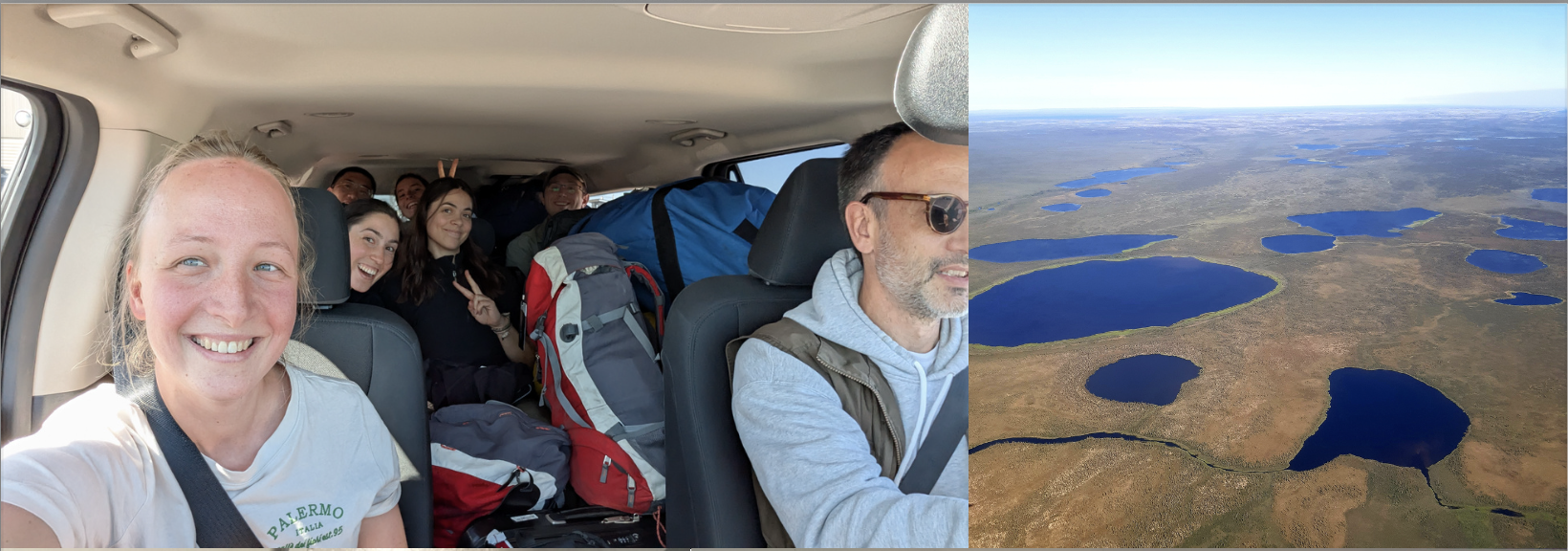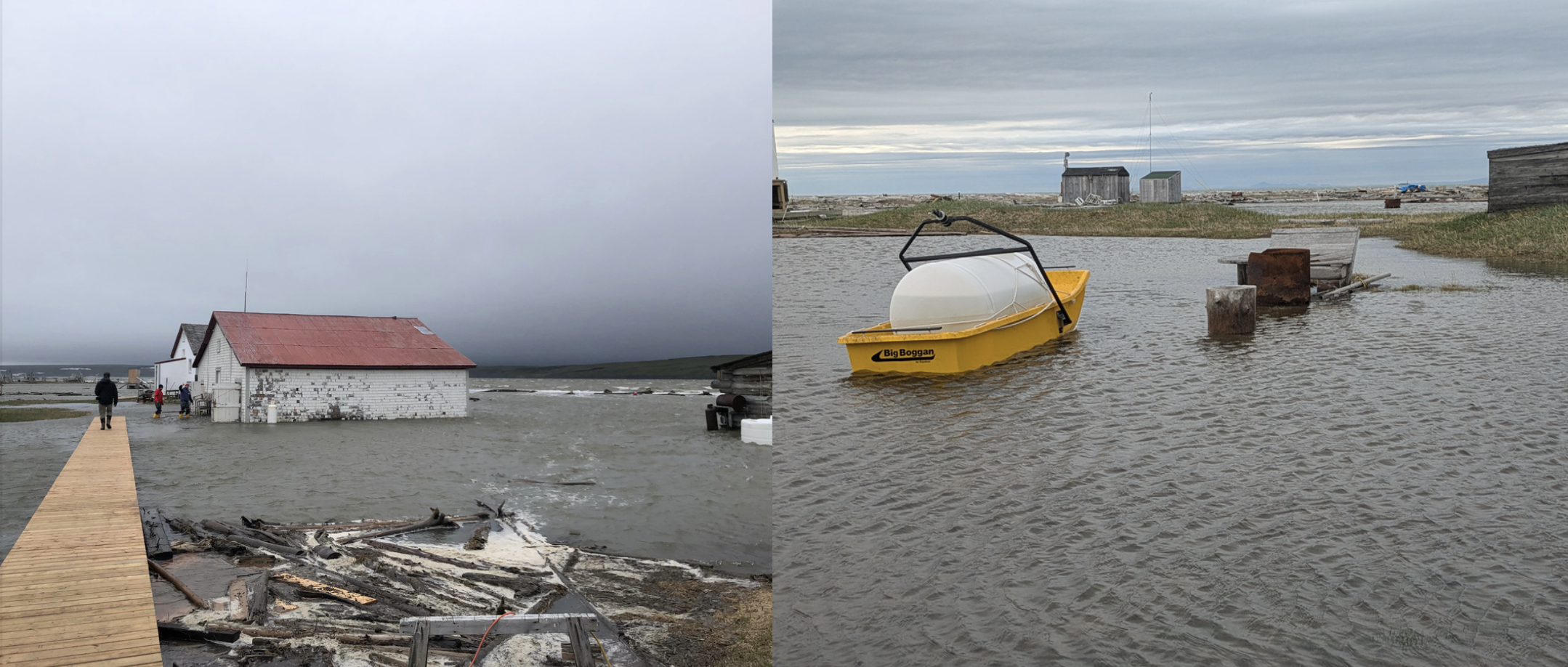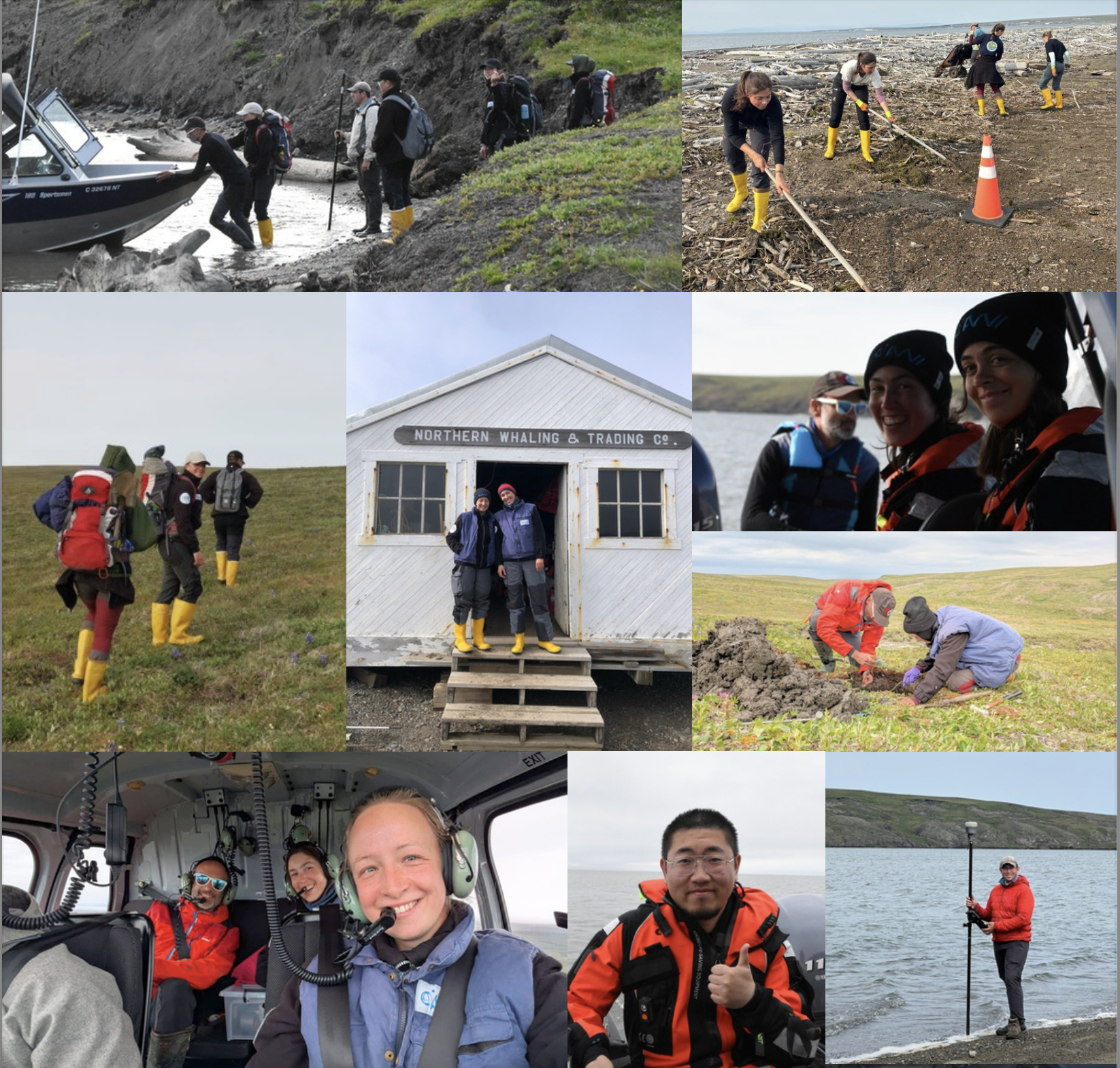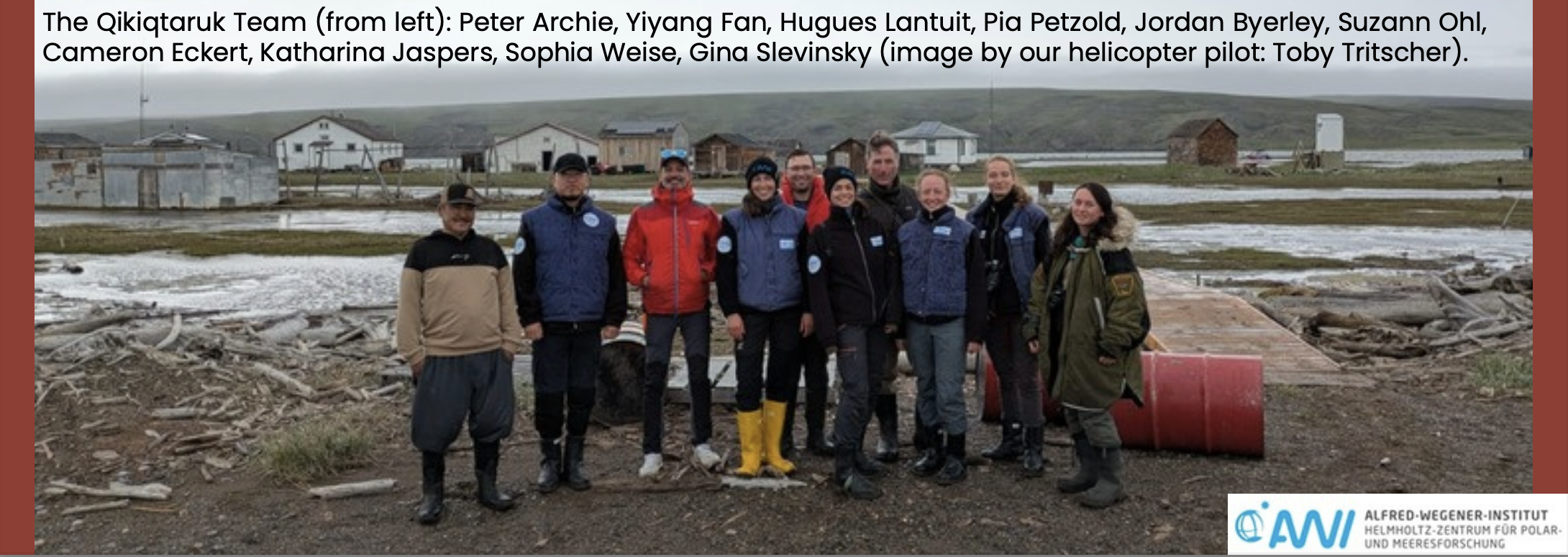Hello everyone,
We started our expedition on the 5th of July, flying from Berlin to Edmonton with a stopover in Amsterdam. After a good night’s rest we continued our journey to Inuvik, which will be our home hub for the coming weeks.
Our Team for this first leg of expedition is made of Hugues Lantuit (expedition leader), Pia Petzold and Yiyang Fan (PhD students at Alfred Wegener Institute), Katharina Jaspers, Sophia Weise and Suzann Ohl (Master’s students at AWI), and Jordan Byerley (DFO Master’s student).
Our main destination is the Herschel Island / Qikiqtaruk off the Yukon coast, but before getting there, we need to prepare for our onward travel by unpacking, sorting and weighing the freight, shopping and precooking for our time on the island, charging all the batteries and organizing the flights and boat journeys to actually get there.

This is no small task, and we are very grafteful to enjoy the support of the Aurora Research Institute (ARI) for the stay in Inuvik, providing lodging and storage for our equipment.
After two warm and sunny days in Inuvik, the weather changed, dropping from 27°C to 4°C. As the weather was predicted to further deteriorate, we decided to reschedule our flight to Qikiqtaruk to move quickly before storm would hit the area. Split into two teams, with each team accompanying a part of the freight, we left Inuvik to head for the island on Thursday July 10, at 9:30 and 12:30. We were very lucky with our timing: 30 minutes after our second Twin Otter had landed, the landing strip was flooded. Fresh, cool air accompanied the unpacking.

Accompanied by beautiful (baby) birds, seals and belugas, we have had some great and productive days on the island. For the starters, we calibrated the devices, planned our data and sample collection, and assembled our boat. We also had our first field trips, collecting HOBO logger data on permafrost temperatures in the ice creeks at the eastern tip of the island and setting up bird voice recorders.
Taking advantage of beautiful sunny weather and calm seas, Peter Archie, our wildlife monitor and captain, boated us to permafrost thaw slump "D" where we measured the position and retreat of the headwall. We collected vegetation samples inland of the slump, and continued our hike to some drained lakes and to slumps "A", "B" & "C" to collect more HOBO logger data, and to measure the position of the headwall of the reactivated slump "C".
Sophia and Kathi both successfully collected their first samples of the Active Layer Detachments (ALDs) and sampled vegetation of different ecological units. Yiyang deployed his ECO loggers and ADCPs (Acoustic Doppler Current Profilers), which measure the flow velocity and direction in nearshore zone currents at different depths until the end of August.

Sampling the ALD was more difficult than expected. Active layer depth was about 50-70 cm. We dug a square hole and collected samples of the active layer for later lab analyses (e.g. biomarkers, total organic carbon). Unfortunately, drilling a core of the underlying permafrost wasn’t possible, due to the clay in the sediment. On a positive note, the mosquito situation has been relaxed so far.
Suzann and Pia worked hard and put a lot of love into the floating platform for the aqua-logger and probe. It measures water parameters including temperature, conductivity, pH and turbidity. We called our mooring ‘The Red Pearl’.
The samples will be packed and brought home for analyses, while the loggers and devices will stay on the island until the end of August, after which the second of the expedition will come in and collect all the equipment to be transported back to Europe. Until then!




